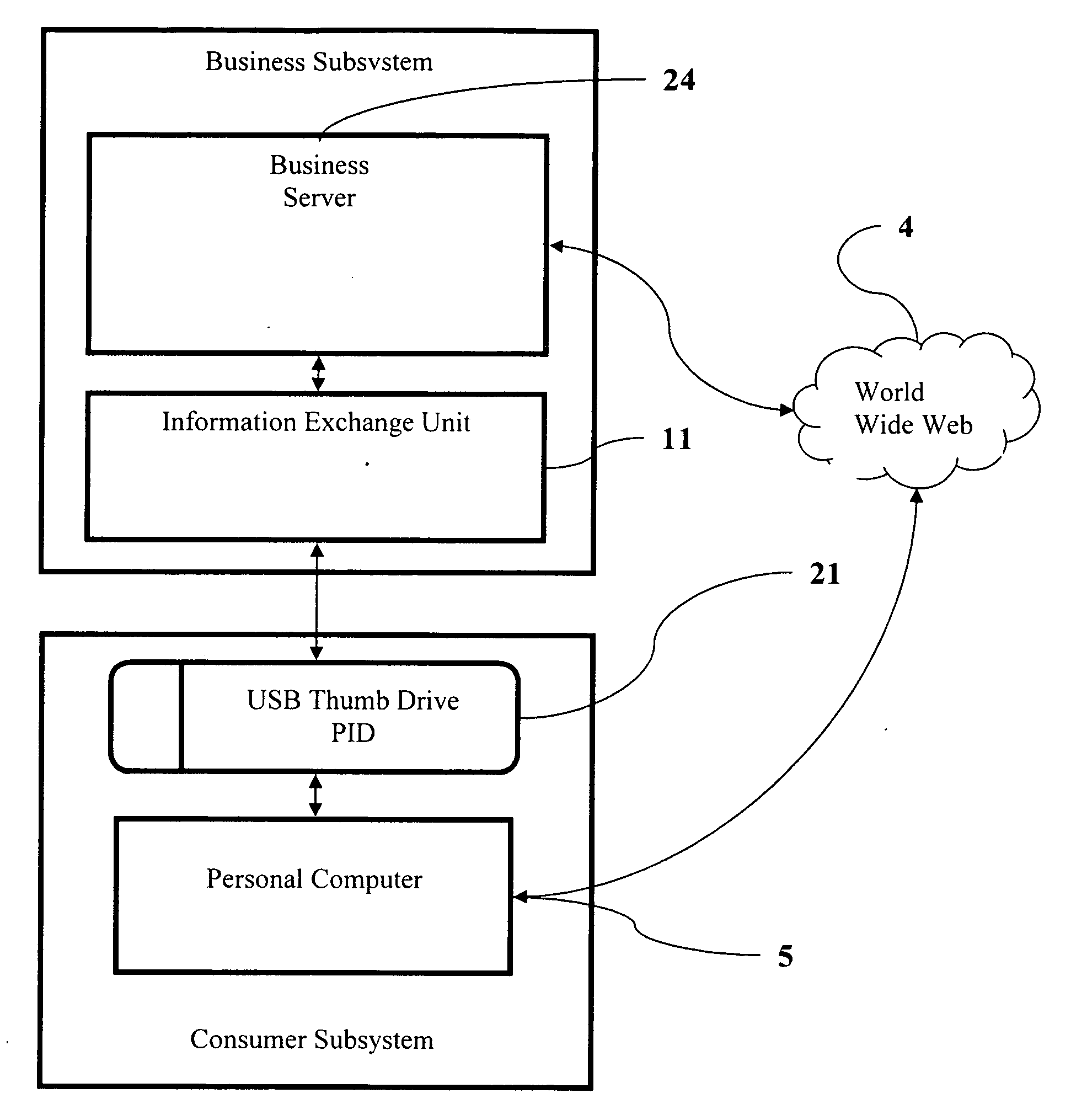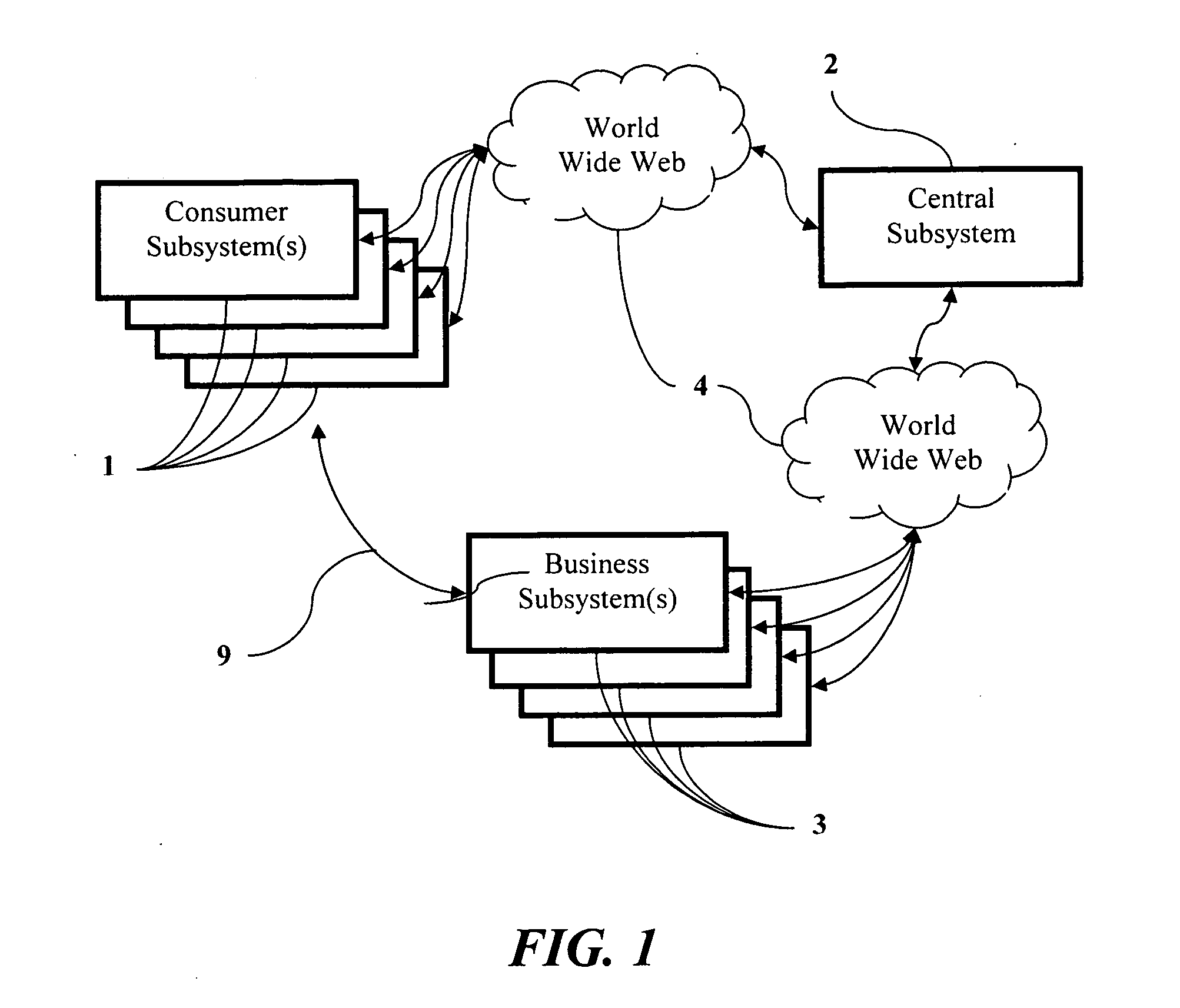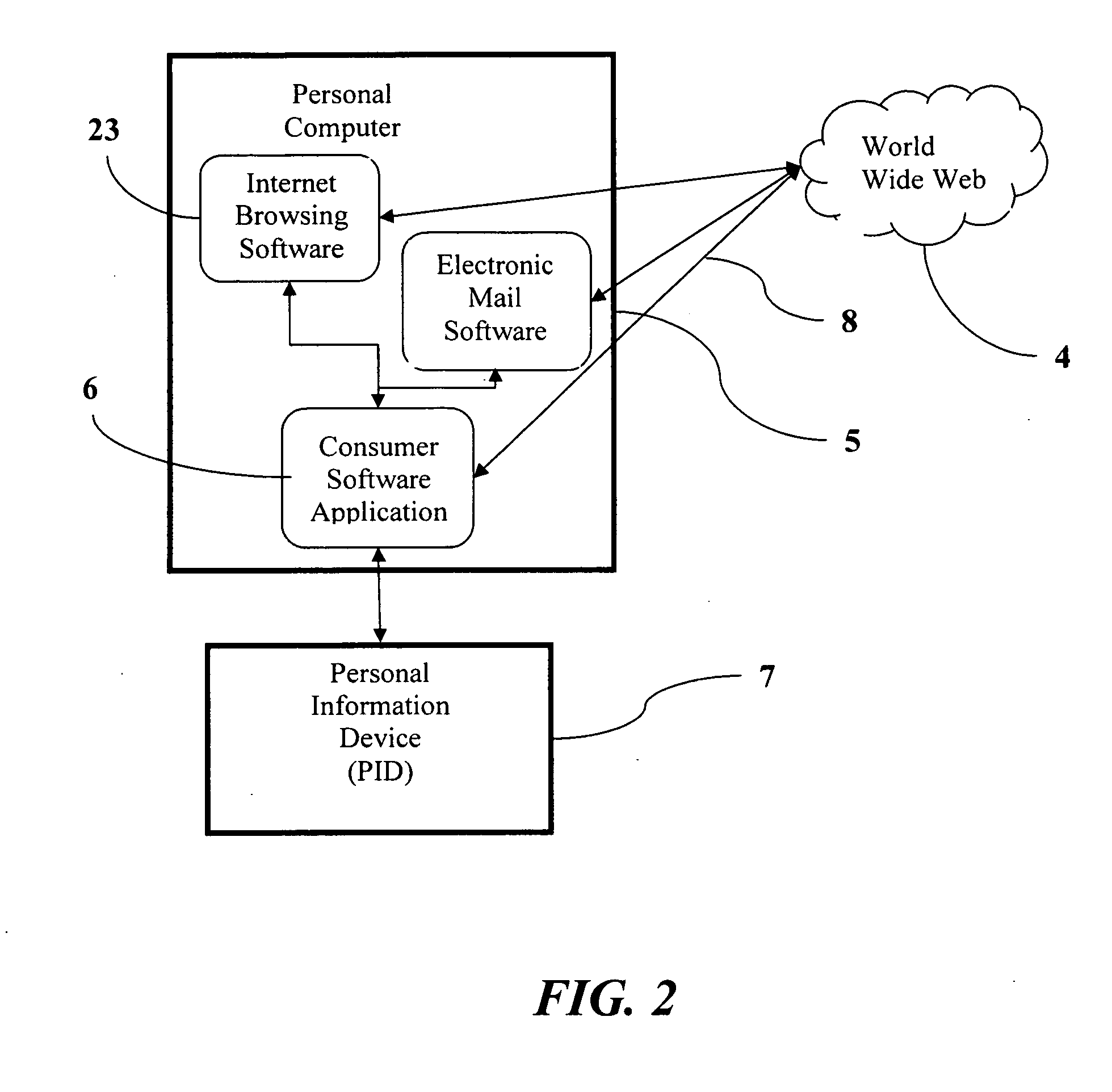Customer loyalty system and method
a loyalty system and customer technology, applied in the field of customer loyalty systems and methods, can solve the problems of cumbersome techniques, inability to adapt to use utilizing electronic data bases for data reduction and analysis, non-secure fish bowl techniques, etc., and achieves the effects of easy maintenance, low cost and simple us
- Summary
- Abstract
- Description
- Claims
- Application Information
AI Technical Summary
Benefits of technology
Problems solved by technology
Method used
Image
Examples
Embodiment Construction
[0038]The invention is directed to a system, herein referred to as “the system”, including a method and apparatus for exchanging customer personal information with a business proprietor during a customer's visit to the proprietor's place of business, allowing the proprietor to analyze customer shopping and spending habits, perform general demographic analyses, reward customer loyalty, and perform other analyses beneficial to the proprietor for the purpose of tailoring business activities to effectively address and reward the proprietor's market. The customer receives information about the business at a level determined by the business proprietor (for example, address, phone, web address, email, menu, and hours of operation). The system is applicable to any business establishment including but not limited to retail stores, restaurants, wholesale establishments, theme parks, theatres, sports stadiums, service providers, and any other business establishment which serves customers by pr...
PUM
 Login to view more
Login to view more Abstract
Description
Claims
Application Information
 Login to view more
Login to view more - R&D Engineer
- R&D Manager
- IP Professional
- Industry Leading Data Capabilities
- Powerful AI technology
- Patent DNA Extraction
Browse by: Latest US Patents, China's latest patents, Technical Efficacy Thesaurus, Application Domain, Technology Topic.
© 2024 PatSnap. All rights reserved.Legal|Privacy policy|Modern Slavery Act Transparency Statement|Sitemap



